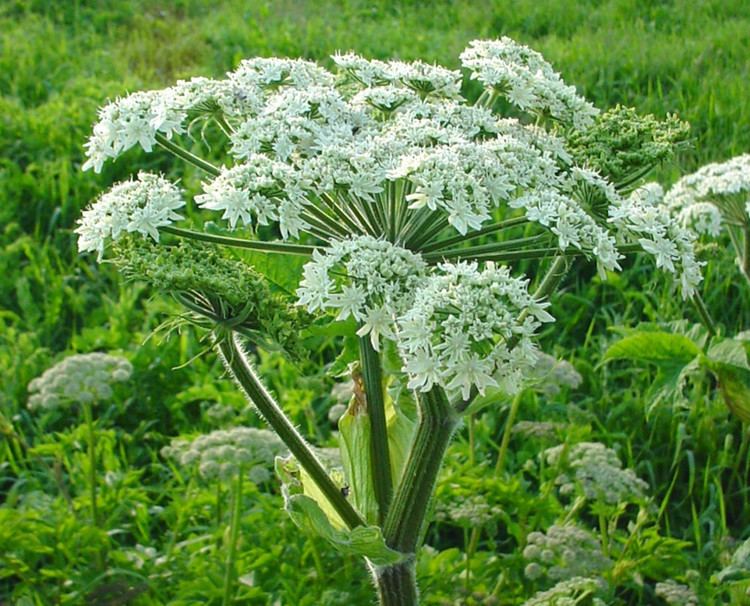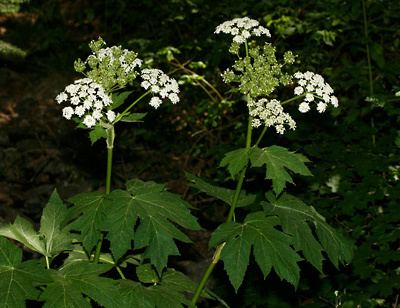Rank Species | Higher classification Cow Parsnip | |
 | ||
Similar Cow Parsnip, Umbelifers, Giant hogweed, Hogweed, Sweet Cicely | ||
Heracleum maximum, cow parsnip (also known as Indian celery, Indian rhubarb or pushki) is the only member of the genus Heracleum native to North America. Its classification has caused some difficulty, with recent authoritative sources referring to it variously as Heracleum maximum or Heracleum lanatum, or as either a subspecies, H. sphondylium subsp. montanum, or a variety, H. sphondylium var. lanatum, of the common hogweed (H. sphondylium). The classification given here follows ITIS.
Contents

Distribution

Cow parsnip is distributed throughout most of the continental United States except the Gulf Coast and a few neighboring states. It occurs from sea level to elevations of about 2,700 metres (9,000 ft), and is especially prevalent in Alaska. It is listed as "Endangered" in Kentucky and "Special Concern" in Tennessee. In Canada, it is found in each province and territory, except Nunavut. It may be weedy or invasive in portions of its range.
Characteristics

Cow parsnip is a tall herb, reaching to heights of over 2 metres (7 ft). The genus name Heracleum (from "Hercules") refers to the very large size of all parts of these plants. Cow Parsnip has the characteristic flower umbels of the carrot family (Apiaceae), about 20 centimetres (8 in) across; these may be flat-topped or rounded, and are always white. Sometimes the outer flowers of the umbel are much larger than the inner ones. The leaves are very large, up to 40 cm (16 in) across, and divided into lobes. The stems are stout and succulent. The seeds are 8–12 mm (0.3–0.5 in) long and 5–8 mm (0.2–0.3 in) wide.
The stems and leaves contain furocoumarins, chemicals responsible for the characteristic rash of erythematous vesicles (burn-like blisters) and subsequent hyperpigmentation that occurs after getting the clear sap onto one's skin. The chemical is photosensitive, with the rash occurring only after exposure to ultraviolet light. Because of this, phytophotodermatitis may occur after using a weed-eater to remove the plants on a sunny day.
Uses

Native American tribes had many different uses for this plant. A common use was to make poultices to be applied to bruises or sores. In addition, young stalks and leaf stems were used for food, where the outer skin was peeled off giving a sweet flavor. The dried stems were used as drinking straws for the old or infirm, and to make flutes for children.
A yellow dye can be made from the roots, and an infusion of the flowers can be rubbed on the body to repel flies and mosquitoes.
The Kutenai (the Kootenai or Kootenay nation, as they refer to themselves outside of Canada) in the Northern Rockies call cow parsnip in their native language wumash (Ktunaxa: wumaǂ).
The Concow (Konkow or Koyom'kawi, as they refer to themselves) band of the Maidu culture in Northern California call it chou’-mē-ō (Konkow language).
The Northern St̓át̓imcets of BC Canada call it hákwa7.
